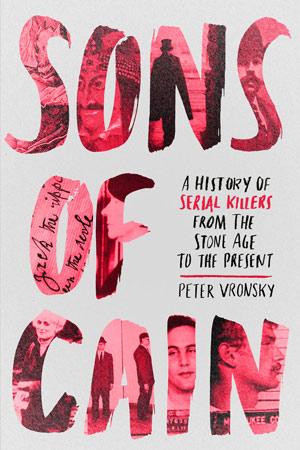
Sons of Cain
A History of Serial Killers from the Stone Age to
the Present
by Peter Vronsky
Before the term was coined in 1981, there were no
"serial killers." There were only "monsters"--killers society first
understood as werewolves, vampires, ghouls and witches or, later,
Hitchcockian psychos.
In Sons of Cain--a book that fills the gap between dry academic studies
and sensationalized true crime--investigative historian Peter Vronsky
examines our understanding of the history of serial killing from its
prehistoric anthropological evolutionary dimensions in the
pre-civilization era (c. 15,000 BC) to today. Delving further back into
human history and deeper into the human psyche than Serial
Killers--Vronsky's 2004 book, which has been called "the definitive
history of the phenomenon of serial murder"--he focuses strictly on
sexual serial killers: thrill killers who engage in murder, rape,
torture, cannibalism and necrophilia, as opposed to for-profit serial
killers, including hit men, or "political" serial killers, like
terrorists or genocidal murderers.
These sexual serial killers differ from all other serial killers in
their motives and their foundations. They are uniquely human and--as
popular culture has demonstrated--uniquely fascinating.
Sons of Cain: A History of Serial Killers from the Stone Age to the Present explores the evolution of serial murder in Western civilization from prehistoric archeological-anthropological evidence, ancient and medieval court records and accounts through to the rise of forensic sciences and criminology in the 19th Century on the eve of the 1888 Jack The Ripper - Whitechapel murders and into the 20th century in the 1950s when the seeds for the so-called 1970-1980 "serial killer epidemic" were laid. Vronsky argues that our concept of supernatural vampires and werewolves closely follows the FBI's categorization of serial killers as either "organized" or "disorganized" and presents evidence that killings in the past attributed to supernatural monsters and lycanthropes were perpetrated by very human lust serial killers and necrophiles. Sons of Cain documents several "serial killer" epidemics in past history, before the term "serial killer" entered common usage in 1981, and argues that 19th century forensic psychiatrist-alienists and criminologists substantially understood the psychopathology of serial killers before Jack the Ripper and had already performed rudimentary attempts at profiling these "monsters" long before the term "serial killer" came into use. Sons of Cain proposes that the roots of the notorious so-called "golden age" serial killers of the "epidemic" in the 1970s-1980s like John Wayne Gacy, Ted Bundy, Arthur Shawcross, Ottis Toole, Edmund Kemper, Gary Ridgway were shaped as children by repressed post-World War II and Cold War era societal and cultural trauma, fear and loathing.
- TABLE OF CONTENTS -
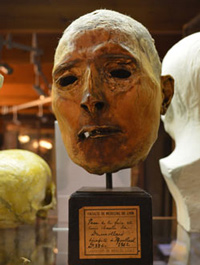
PART 1 On the Origin of the Species: The
Evolution of Serial Killers
CHAPTER 1 - Serial Killers: A Brief Introduction to the Species
-
Monstrum
-
Coining the term “serial killer”
-
Categorizing Serial Killers
-
The serial killer surge in the 1970s-1980s
-
Close Encounters of the Third Kind with serial killers
-
Redefining serial killers
-
The new word: serial erotophonophilia
-
A new history of the world of monsters
CHAPTER 2 - Genesis: The Reptilian Zombie Serial Killer Triune
Brain
-
What makes a serial killer: the current theories
-
The 4-Fs of evolutionary survival and the triune brain
-
From reptilian rapist cannibals to civilized citizen serial killers: the Big History of humans
-
The oldest cold case: the serial killing of the Neanderthals
-
Necrophobia and Deviant “Vampire Graves”
-
The techno-humanitarian balance hypothesis
-
The serial killer civilized
CHAPTER 3 -
Psychopathia Sexualis: The
Psychology of the Lust Serial Killer in Civilized Society
-
Psychopathia Sexualis: the paraphilic catalog
-
Raising Cain: making children into serial killers
-
Jerry Brudos “Lust Killer or Shoe Fetish Killer”—Oregon, 1969
-
-
De-stigmatizing “happy” paraphilics today
-
“Vandalized lovemaps”: from love to lust, from child to paraphilic sex serial killer
-
From fantasy to reality: the cycle of acting out compulsive serial killing fantasies
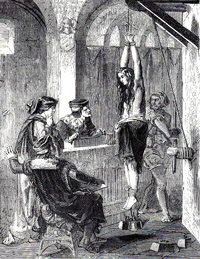
-
Going serial: chasing the ‘dragon’s tail’ of the second kill addiction
Part II. Serial Killer
Chronicles: The Early Forensic History of Monsters
CHAPTER 4 - The Dawn of the Less-Dead: Serial Killers and Modernity
-
Serial Killing and Leisure
-
The ancient aristocrat serial killers: blood lust and power
-
‘Caligula’ (12-41 AD)
-
-
Pre-modern serial killing: the routine life of trauma
-
Serial killing: print media, industrial urbanization, and the ‘administrative state’
-
The Dawn of the Less-Dead: “mimetic compulsion”
-
Serial killer modern mobility and urbanization
CHAPTER 5 - Lupina insania: Criminalizing Werewolves
and Little Red Riding Hood as Victim, 1450–1650
-
The Werewolf lycanthrope
-
The Ancients on werewolves
-
Unity in crisis and the criminalization of the werewolf
-
Peter Stubbe “Werewolf of Bedburg”—Germany, 1589
-
Pierre Bourgot and Michel Vedung—France, 1521
-
Gille Garnier—France, 1574
-
“Werewolf or Demon Tailor of Chalon”—France, 1598
-
-
Jean Grenier—France, 1603
-
The Jean Grenier appeal and the forensics of werewolves
-
Defending serial lycanthropes
-
Jacques Roulet Werewolf Appeal, 1598
-
-
Clinical Lycantoropia-Lycomania Lupina insania
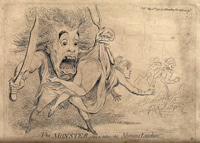
-
Little ‘Less-Dead’ Red Riding Hood: the emergence of the prostitute as preferred victim
CHAPTER 6
- Malleus Maleficarum: The Great Witch Hunt as a Serial-Killing
Woman Hunt
-
The real serial killing epidemic: witch hunting or woman killing?
-
The “diabolist logic of torture trials”
-
The decline and waning of serial killers 1650-1800
CHAPTER 7 -
The Rippers Before Jack: The Rise of Modern Serial Killers in
Europe, 1800–1887
-
Serial necrophile François Bertrand “The Vampire of Montparnasse”, Paris, 1850
-
France’s First Modern Serial Killer: “The Wolf” or “Killer of Servant Girls”, 1861
-
The brave new world like no other before
-
Martin Dumollard: profile of a serial killing village creep
-
The first victim
-
The Capture of “The French Wolf”
-
The investigation and trial of the Dumollards
-
The psychopathology of Dumollard: simple robbery or paraphilic sex crimes?

-
Dumollard vs. Albert DeSalvo, "The Boston Strangler”
-
The Servant Girl Fetish
-
Andreas Bichel “The Girl Slaughterer”, Germany, 1808
-
“The strategy of serialization”: transforming Bichel into a serial killing fetish ripper
-
The “race of Bichels”
-
Giorgio Orsolano “The Hyena of St. Giorgio” or “Cannibal Sausage Maker”—Italy 1832
-
Manuel Blanco Romasanta “Werewolf of Allariz”—Spain 1852
-
Joseph Philippe “The Terror of Paris”—France 1866
-
Eusebius Pieydagnelle “Blood Butcher”—France 1870
-
Vincenzo Verzeni “The Vampire of Bergamo”—Italy 1871
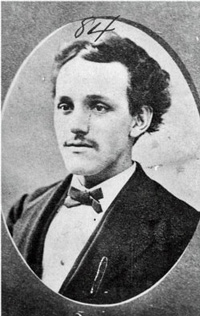
-
Carlino (Callisto) Grandi “The Child Killer”—Italy, 1875
-
Juan Díaz de Garayo “El Sacamantecas” (“The Fat Extractor”)—Spain 1879
-
CHAPTER 8 - Back in the U.S.A.: The Rise of the Modern
American Serial Killer
-
American 'Pioneering' Serial Killers
-
Herman Webster Mudgett or H.H. Holmes—Chicago-Philadelphia, 1895
-
Jesse Pomeroy “The Boy Fiend”—Boston, 1874
-
Joseph Lapage “The French Monster”—Vermont/New Hampshire, 1875
-
Thomas W. Piper “The Bat” and “Boston Belfry Murderer”—Boston, 1875
-
Theodor ‘Theo’ Durrant “The Demon of the Belfry”—San Francisco, 1895
-
The Servant Girl Annihilator—Austin, Texas, 1885
-
CHAPTER 9 - Slouching Toward Whitechapel: Sex Crimes in Britain Before Jack the Ripper
-
The London Monster—1790
-
British Monsters and Murders
-
Frederick Baker—Alton, Britain, 1867
-
PART III. The New Age of Monsters: The Rise of the Modern Serial Killer
CHAPTER 10 - Raptor: Jack the Ripper and the Whitechapel Murders, 1888
-
The Canonical Five Jack the Ripper Murders
-
The ‘Sixth’ First Victim
-
Profiling Jack the Ripper in 1888
-
Jack the Ripper’s “Surgical Skill”
-
Profiling Jack the Ripper Today
-
Raptor: Geoprofiling Jack the Ripper and Ockham’s razor
-
Diabolus in cultura: “The insane dialogue of love and death in the limitless presumption of appetite”
CHAPTER 11 - The French Ripper: The Forensics of Serial Murder in the Belle Epoch, 1897
-
Joseph Vacher - “South-East Ripper” – “Killer of Little Shepherds”—France, 1897
-
Émile Fourquet and linkage analysis
-
The Arrest
-
“The Jesuit”
-
Interviewing serial killers: the art and science of interrogating psychopaths
-
Fourquet’s interview of Vacher
-
The question of sanity
-
The trial and execution of Joseph Vacher
CHAPTER 12 - Red Tide Rising: Serial Killers in the First Half of the Twentieth Century, 1900–1950
-
The Global Rise of Serial Killers
-
Serial killing in the USA 1900-1950
-
The first American serial killer surge, 1911-1915
-
The 1916-1934 serial killer “interlude”
-
The second American serial killer surge, 1935-1950
-
Defining the “Ted Bundy-type” postmodern sadist raffiné (genteel sadist), 1949
CHAPTER 13 - American Gothic: The “Golden Age” of Serial Killers, 1950–2000
-
The Dawn of the Golden Age
-
The missing missing and the great serial killer “epidemic”
-
Congress and the ‘serial killer epidemic’ 1981-83
-
The rise and decline of ViCAP (Violent Criminal Apprehension Program)
-
Twilight of the Golden Age
CHAPTER 14 - Serial-Killing Rape Culture and the Sweats: The “Greatest Generation” and Their Sons of Cain
-
World War II, as the last ‘good war’ and the “Greatest Generation” that fought it
-
The postwar sadistic torture ‘sweats’ and true detective pulps: “…a weird thing to do.”
-
“Tsunami of lust”: American G.I.s and rape in Europe during World War II
-
American G.I.s in the Pacific and necrophilic fetish war skull totems
-
The World War II Paternal Trauma-Induced Serial Killer Epidemic Hypothesis
-
Killing for Culture
CONCLUSION - Pogo Syndrome: Thinking Herds of Crazies in the Twilight of the Golden Age of Serial Killers
-
Explaining the apparent decline in the number of serial killers
-
Technological - Social
-
Forensic Advances
-
Cultural - Psychological
-
Availability of Pornographic Media
-
Serial Killers are Better at Getting Away With It
-
AFTERWORD: “Serial Killers Need Hugs Too”
-
A daughter's search for her mother's severed head
ENDNOTES; SOURCES; INDEX
